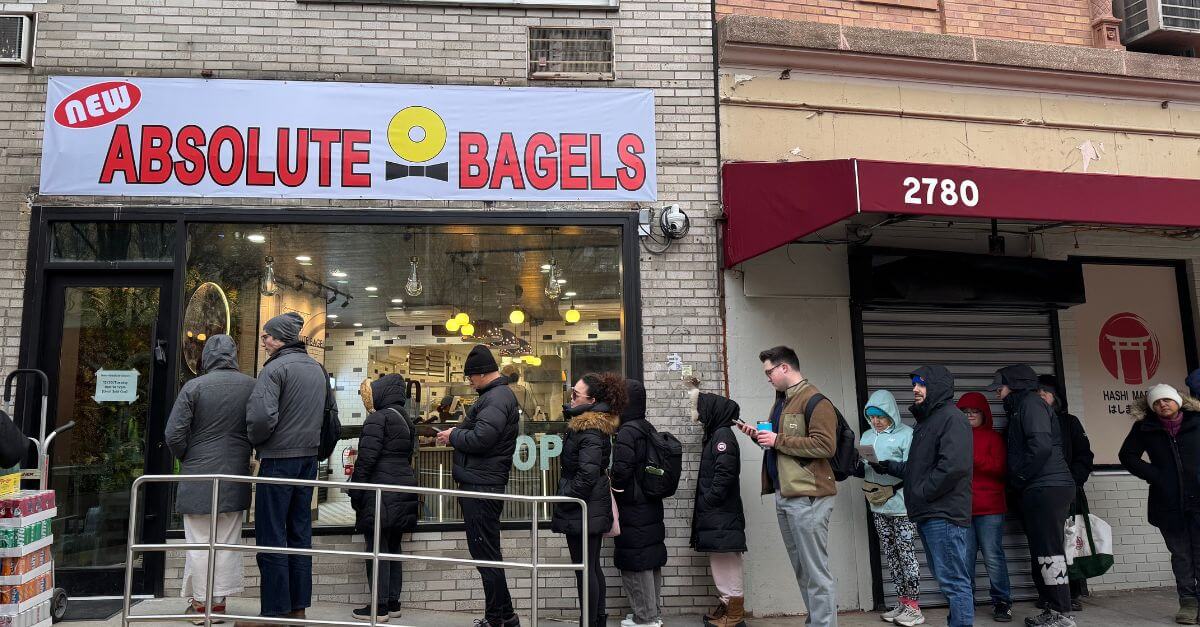Mitzvah Accomplished

Image by Anya Ulinich
A few Octobers ago, I found myself in TriBeCa, ambling down Hudson Street. It was a Sunday afternoon, and I’d just gotten back from a three-day visit with my parents for Sukkot. Up ahead, I spotted two Lubavitcher teenagers, smiling and eager, green lulavim gripped in their fists like Jedi swords. I slowed and squinted to make out their features. All these years, and I’d yet to run into a relative.
Normally in these situations, I try to cross the street. Not that I have something to hide. Three decades into a secular existence, I’m long past ducking into doorways to avoid being caught wearing jeans. Nor am I embarrassed by these earnest young men, with their tefillin and matzos and shofars and menorah car ornaments. I’m simply doing my New York thing, skirting an interaction, the way I do with those college students who ambush you on the sidewalk and ask if you care about saving polar bears.
But I’ve always had a soft spot for Sukkot. It’s a happy holiday — al fresco dining, crisp autumn air and no weird food or long shul services to endure. My father still buys me my own lulav and esrog every year, even though he knows I don’t observe. It’s a nice mitzvah, he tells me. As luck would have it that day, I’d accidentally left my new set back in New Haven. I noticed that the boys hadn’t gotten any nibbles.
“Excuse me, are you…,” one of them said.
“I’d love to, thanks,” I said, and their eyes crinkled happily.
It may seem as though young male shluchim, like hansom cabs, have always prowled streets of Manhattan, but I’m old enough to remember when a Lubavitcher wasn’t automatically equated with vigorous outreach — the caravans of mitzvah tanks blaring tinny klezmer music down Fifth Avenue, the billboards proclaiming the rebbe as the King Messiah. When I was a kid, Chabad Houses had yet to offer college students warm Shabbat meals and Kabbalah classes. Growing up in Connecticut, I considered myself really, really Orthodox and left it at that. If I thought about the rebbe at all, it was as someone holy and learned but having little to do with me.
Not that we resembled the Modern Orthodox families in town. In contrast to my own parents, the mothers of my New Haven friends got their hair done at the local salon and their fathers shaved. I desperately craved a pair of Levi’s. And more than anything, I dreamed of going to college one day, furnishing a Manhattan bachelorette pad just like Marlo Thomas’s in “That Girl” and being wined and dined by a nebbishy fiancé whom I’d never actually have to marry.
Everything changed in the early 1970s, when the rebbe’s mitzvah campaigns rolled out in full force and with military precision across major U.S. cities. Without quite knowing what had happened, I’d become a young teenage foot soldier, singing my heart out, at school and camp, about the 10 essential mitzvahs every Jew should do to hasten the coming of the Messiah — female modesty, giving charity, hanging mezuzas. Even in New Haven, carloads of ladies would fan out at the local mall and hand perfect strangers neatly bagged candle-lighting kits. No one forced you to participate, but social pressure was usually enough to get the laggards in line. The message to the community was clear: You are with us or agin us.
By the time I turned 16, I was firmly moving into agin territory. I took a summer job as a counselor at a Chabad day camp in Encino. I was one of a dozen girls brought in from the East Coast. We were meant to be a good influence on the children, none of whom had any connection to their Jewish roots. If we were unlikely to bring them to observance in eight weeks, we could at least feed them a kosher lunch and teach them a few Hebrew songs. I was in charge of the five-year-olds, assisted by a surly local named Denise, all legs, short shorts and suntan. She was only two years younger than me, but with my long-sleeved Gan Israel T-shirt, bulky denim skirt and knee socks in the California heat, I looked — and felt — like a hausfrau.
To say my heart was not in the work doesn’t come close to my utter indifference to the spiritual well-being of my freckle-faced charges. Together we washed our hands before bread, said the morning prayers at lineup and dressed up for Bubbe-Zayde Day. But I was an impostor. It was the same with the adults I’d meet at the local Chabad Houses. Newly returned to the faith, they always wanted to know if I’d met the rebbe, and seemed mildly crestfallen when I said I hadn’t.
Most evenings, the counselors piled into our battered rented van and explored the city, gawping at the strangeness of it all — Hollywood Boulevard, Venice Beach, Mulholland Drive, gay men hanging out on Santa Monica Boulevard. On Wednesday nights, we’d join Cruise Night on Van Nuys Boulevard, my van-mates shrieking out the window at the cute guys. But where they were having a bit of fun, indulging in harmless flirtation, I was leaving mental breadcrumbs for a world I vowed to be part of one day — vibrant, energetic, ripe for experimentation. The afternoon I roamed around the UCLA campus, I felt my chest swell with hope, then contract into a dull ache for the battles I knew lay ahead. I had my own campaign to run.
Back on Hudson Street, I took the lulav in my right hand and esrog in the left. One of the boys started uttering the prayer for me to follow. I put my hand up.
“I got this.” I chanted the bracha, waited for their “Amen” and continued on my way.
Mitzvah accomplished.
Chaya Deitsch is the author of “Here and There: Leaving Hasidism, Keeping My Family.”














